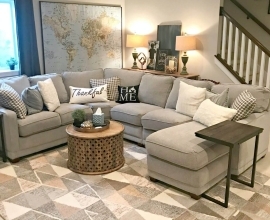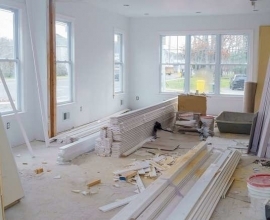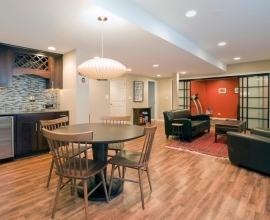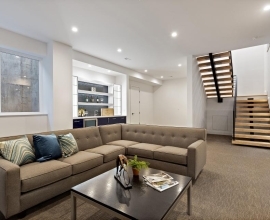Treat the basement like any other space in your home
The fact that your basement draws comparisons to a dungeon might not be a bad thing if you’re planning to host a Halloween party. For the other 364 days of the year, however, having a dark, creepy space in your home is nothing more than untapped potential.
“We need to stop considering our basements as secondary areas – storage facilities, rec rooms or places that have lesser value than the rest of the home,” says Aleem Kassam, a principal interior designer at Kalu Interiors in Vancouver, B.C. Making your basement just as welcoming as other levels not only increases your liveable space, it also increases the value of your home, he maintains.
Kassam doesn’t even like the word basement because he believes it has negative connotations. Instead, he refers to it as the lower level – a term that encourages homeowners to think of the space as an extension “rather than a faraway distant place that ends up as a dumping ground.”
When asked for advice on how to tackle a basement renovation, Kassam draws from a recent project in which Kalu Interiors renovated a 2,000-square-foot basement in Vancouver that was below ground and original to the 20-year-old home, complete with window wells, dark and outdated finishes, underutilized spaces and lack of lighting.
The homeowners’ wish list included a home gym, pool table and bar, library, kitchen, theatre room, a guest bedroom, two guest bathrooms, a laundry room and storage areas. “Your basement most likely has untapped potential so think of additional functions you may love to have in your home,” says Kassam.
Because most basements have limited access to natural light, deciding how to artificially illuminate the space is a crucial starting point. That includes choosing a variety of lighting sources, such as recessed and sconces, but also the right finishes. “Generally, going for lighter, brighter and airier colours and finishes is the best solution,” he says.
A light, bright and neutral space will grow with you as your needs evolve or as trends come and go. “Play with colours and accents only in the furnishings, art and accessories,” Kassam says. Basements typically incur more wear and tear than other areas of a home so it’s also important to select materials and finishes that are durable and that can even weather the unimaginable, such as a potential flood.
Kassam offers these tips:
Lighting: Pay attention to lighting right from the get-go because once your renovation is complete, there’s no easy way to make up for a lack of lighting other than lamps. If you’ve gone overboard, on the other hand, you have several options: you can turn a light off, unscrew a bulb or put a light on a dimmer, Kassam reminds. When planning lighting, don’t forget to take advantage of the ceilings. Though ceiling heights in most basements are low, you can evenly light the space while also creating the illusion of height by incorporating overhead recessed lighting.
Flooring: Vinyl plank flooring is water resistant, feels warm underfoot and comes in a variety of colours, widths, lengths and finishes. It can often be installed directly to the subfloor and can also be floated without an underlay so individual planks can be replaced if damaged. The cost is also “extremely competitive, making it a feasible selection for a basement renovation,” says Kassam.
Paint: Whites are a good choice because they create a light, bright environment while creating the perfect canvas for any space. One exception might be the home theatre, where Kassam typically recommends a darker, bolder colour.
Fabrics: The world is your oyster when it comes to fabrics, he assures. “By maintaining lighter neutral tones in the walls, floors and built-ins, fabrics and rugs can be in an accent colour to your liking but preferably one that ties into the rest of the home. These items are easily changed in the future so follow your heart’s desire … but keep it consistent. A common thread and theme will ensure there’s continuity and consistency not only through the space, but throughout the home.”
One final piece of advice: Don’t underestimate the value of wall-to-wall and/or floor-to-ceiling built-ins, which can provide valuable storage and work surfaces and help you maximize every square inch of your space, Kassam reminds.
Source: https://bit.ly/38jkdc0







